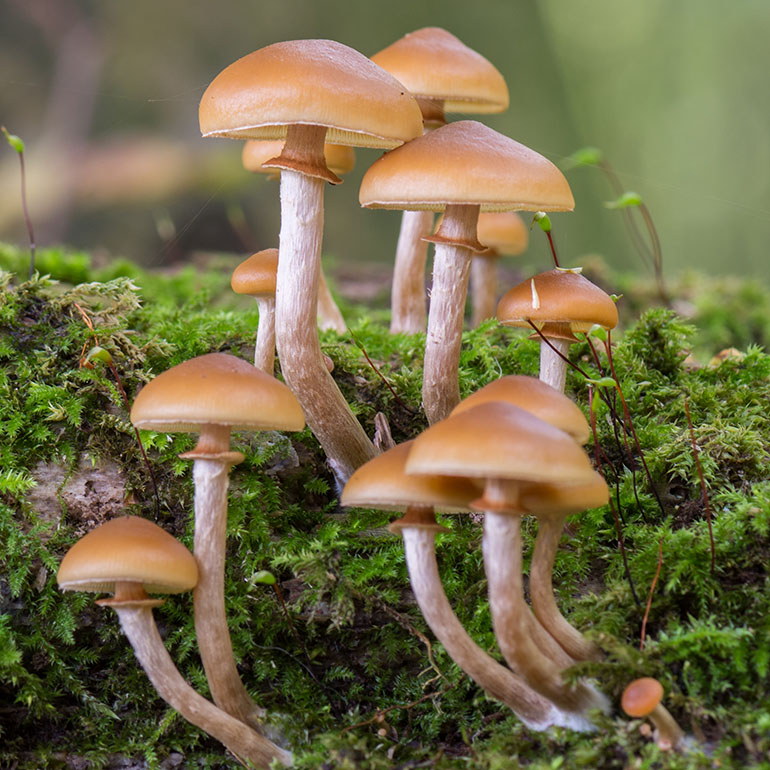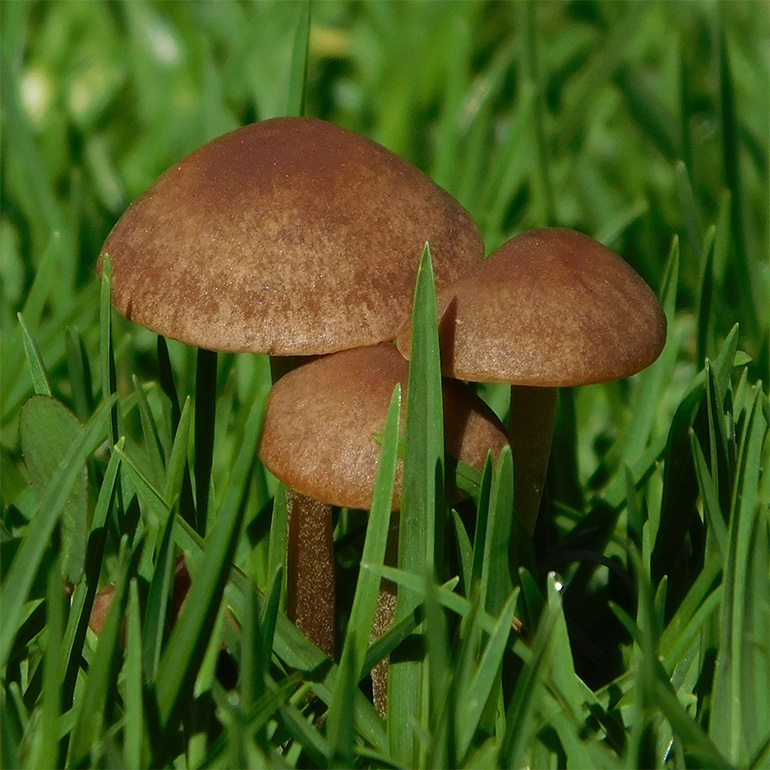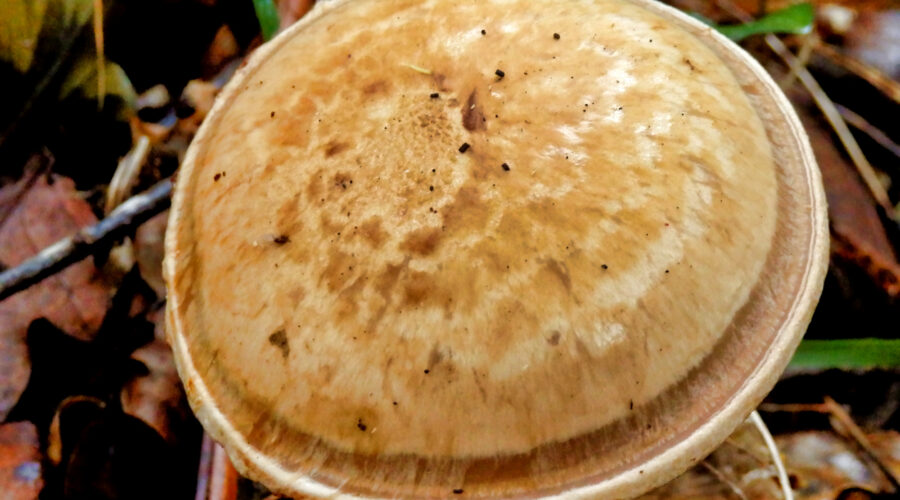Banded Mottlegill Mushrooms: Look-Alikes, Identification and More
You may not have heard of Panaeolus cinctulus (banded mottlegill mushrooms) before, but this is actually a very common, widely distributed species of psilocybin mushroom. You may be more familiar with species belonging to the Psilocybe genus, and this is indeed where most psychedelic mushrooms belong.
However, banded mottlegill mushrooms are one such species — along with Panaeolus cyanescens (“blue meanies”), for instance — that are categorized under the genus Panaeolus.
Interested in joining a Psychedelics Clinical Trial? Sign up here now and we will connect you with a clinical trial in your area when one becomes available.
If you want to use Panaeolus cinctulus, you should be aware of the law surrounding psilocybin mushrooms where you live, as mushrooms containing this psychedelic compound are illegal in most countries around the world. If you want to grow and possess banded mottlegill mushrooms, you need to be aware of the legal risks involved.
How To Identify Panaeolus Cinctulus And Its Lookalikes
First, you should be aware that banded mottlegill mushrooms grow in the wild. So if you wanted to source them by picking them (instead of buying them from a street dealer or on the dark web), then you need to know what they look like. After all, banded mottlegill mushrooms have some lookalikes, many of which are harmless (and even tasty), but some are physically risky to consume.
Where Do Panaeolus Cinctulus Grow?

Knowing where they grow is the first necessary step in identifying banded mottlegill mushrooms in the wild. This means being aware of the kind of habitat they grow in, as well as the countries (and regions in those countries) where you’ll find them.
RELATED: A Guide to Making Blue Honey (Magic Mushroom Infused Honey)
Habitat
Panaeolus cinctulus is a cosmopolitan species (meaning it extends across all or most of the world) that grows solitary to gregarious to cespitose (densely clumped) on compost piles, well-fertilized lawns and gardens, and (rarely) directly on horse dung. It grows from Spring to Fall, growing abundantly after rain.
Where To Find Panaeolus Cinctulus In The World
You can find banded mottlegill mushrooms in many regions, including:
- Africa (South Africa)
- Canada
- The United States. (It is common in Oregon, Alaska, Washington, and both Northern and Southern California, but it is also known to grow in all 50 states. According to American naturalist and mycologist David Arora, Panaeolus calculus is the most common psilocybin mushroom in California.)
- Europe (Denmark, Finland, France, Germany, Great Britain, Estonia, Iceland, Ireland, Italy, Slovenia, Norway)
- India
- East Asia (Japan, South Korea)
- Southeast Asia (Philippines)
- Mexico
- New Guinea
- New Zealand
- Russia
- South America (Argentina, Chile, Brazil)
How To Identify Panaeolus Cinctulus
To identify banded mottlegill mushrooms, you need to know the distinctive features of the mushroom, which are as follows:
- Cap (pileus): 1.5-5 cm, hemispherical to convex when young to broadly umbonate or plane in age. The cap is smooth and hygrophanous (it changes color as it loses or absorbs water): it is striking cinnamon-brown when moist and soot-black when wet (which disappears when the mushroom completely dries out). The outer band is typically darker.
- Gills (lamellae): Close, adnate to adnexed, cream-colored when young, later mottled dingy brown, then to soot-black. The gill edges are white and slightly fringed, but turn blackish when fully mature.
- Stem (stipe): 2-10 cm long, 2-9 mm thick, equal or tapered at the ends, reddish-brown to whitish, hollow, and no veil remnants. The base of the stem occasionally stains blue.
- Taste: Farinaceous (“flour-like”) when fresh, saliferous (salty) when dried.
- Odor: Slightly farinaceous.
Banded Mottlegill Mushroom Lookalikes
Panaeolus cinctulus is a “little brown mushroom” or LBM, a member of a large group of mostly unrelated species that can be very easy to mix up. Most other psilocybin mushrooms are LBMs, as are some culinary species, such as Enokitake and some honey mushrooms (e.g. Armillaria mellea).
Banded mottlegill mushrooms have some poisonous lookalikes as well, including the Deadly Galerina (Galerina marginata). The latter contains amatoxins, which have the potential to cause a fatal reaction.


Although careful attention to identification details and habitat will exclude all of the lookalikes, the danger is that someone may not pay attention to this. The result could be (at best) not tripping from the mushrooms you pick and consume or (at worst) a severe physical reaction from a poisonous species.
To help with identifying the correct species, you could:
- Take a field guide for your area
- Have some forums handy on your phone, such as Shroomery’s “Mushrooms Hunting and Identification” subforum
- Use the iNaturalist app, which provides identifications when photos of mushrooms are uploaded
- Join local Facebook groups (members may be aware of local lookalikes)
Also, make sure you check all the mushrooms as you collect them and avoid any that don’t fit the description of banded mottlegills mushrooms provided above.
How To Grow Panaeolus Cinctulus Mushrooms
If you don’t want to pick these mushrooms in the wild, it is certainly possible to cultivate them at home. Growing banded mottlegill mushrooms involves the same process as growing other species of psilocybin mushroom. It may require a bit more patience and care than growing Psilocybe cubensis, which is known to be relatively easy to grow, making it a great beginner species for novice growers. With patience, however, you can end up with a nice batch of banded mottlegill mushrooms.
You should refer to our guide on how to grow psilocybin mushrooms at home for detailed instructions. One important tip to keep in mind is to use horse manure as a nutrient-rich medium in which to grow them, as this is what these mushrooms typically like to grow in.
Let’s now offer a quick summary of everything you need and the steps you should take.
Panaeolus Cinctulus Spores
First, you need to source some Panaeolus cinctulus spores. These are the reproductive cells that allow the mushroom to grow. Magic mushroom spores do not contain psilocybin, so they are not themselves illegal. But once they germinate and begin producing mycelium, psilocybin will be produced, making the end product illegal (since psilocybin is a controlled substance in most countries).
Magic mushroom spores are, however, illegal in California, Georgia, and Idaho. In the other 47 states, you’re free to buy and possess them.
There are different ways to obtain banded mottlegill mushroom spores. The most popular option is to buy them online from a vendor selling a spore syringe or print.
The spore syringe is an oral syringe that contains just water and the wavy cap spores, while spore prints are little pieces of paper with the spores stamped onto them. The prints are dried and need to be rehydrated when you want to use them.
Steps For Growing Banded Mottlegill Mushrooms
It’s best to use our detailed guide for following the steps for growing psilocybin mushrooms. You need the right ingredients, equipment, and hygiene supplies before getting started. The necessary steps will then be:
- Preparing the jars
- Inoculation
- Colonization
- Preparing the grow chamber
- Fruiting
- Harvesting
- Drying the mushrooms for long-term storage (Panaeolus cinctulus dried — like other magic mushroom species — will still be as potent for about a year, whereas if fresh, they will only stay good in the fridge for 5-10 days)
Banded Mottlegill Potency
The potency of Panaeolus cinctulus is generally considered to be weaker than that of Psilocybe cubensis, which is a medium-strength mushroom. This means you would need to take a higher dose of banded mottlegill mushrooms than you would if consuming Psilocybe cubensis (assuming you want a similar intensity of effects).
However, it’s crucial to underscore that potency can vary from specimen to specimen; plus variations in human sensitivity might mean you still get pronounced effects from what is consdiered a low dose.
Dosage
There may be some uncertainty regarding just how potent banded mottlegill mushrooms are.
Nonetheless, a good rule of thumb is that they are generally a weak to moderately potent psilocybin mushroom. This means you should take a higher dosage of them compared to more potent magic mushroom species.
For example, Erowid lists the following dosages for Psilocybe cubensis:
- Light: 0.25-1 g
- Common: 1-2.5 g
- Strong: 2.5-5 g
- Heavy: 5+ g
With these calculations in mind, as well as Erowid’s dosage recommendations for Psilocybe cubensis, the following dosages for banded mottlegill mushrooms are a good rule of thumb:
- Light: 0.35-1.25 g
- Common: 1.25-3.5 g
- Strong: 3.5-6 g
- Heavy: 6+ g
Duration Of Panaolus Cinctulus Effects
A banded mottlegill mushroom trip will generally last between 4-6 hours. This duration is pretty consistent. In clinical trials involving psilocybin, most sessions will last up to six hours. After this time, the participants will no longer experience any psychedelic effects.
But the duration of a psilocybin experience for any individual depends on a few factors:
- Dosage: Taking a low dose of magic mushrooms could result in a trip lasting only a few hours, whereas consuming a high dose could lead to a six-hour experience.
- Method of consumption: It takes around 30 minutes for shrooms to kick in. But you can quicken this process through lemon tekking — it is believed the citric acid in the lemon juice breaks down the mushroom material, saving your body some time it would otherwise spend breaking it down. The lemon tek method may result in a faster onset and a stronger and shorter journey than eating dried mushrooms as they are.
- Eating psilocybin mushrooms on an empty stomach can lead to a faster onset than consuming them on a full stomach.
- Cannabis may elongate a magic mushroom trip if you smoke it towards the end of the experience. This is because cannabis tends to potentiate the effects of psychedelics. Not everyone may experience this effect, however.
Psilocybin mushrooms have neither long-lasting nor short-lasting effects. Here is the duration of other psychedelics, so you can get a better sense of this:
- DMT: 5-30 minutes
- 5-MeO-DMT: 15-45 minutes
- LSD: 8-14 hours
- Mescaline: 8-16 hours
- Ibogaine: 8-24 hours
The duration of a mushroom trip is comparable to that of ayahuasca (also 4-6 hours). For many users, 4-6 hours of tripping is ideal; it means the experience is easier to fit into a day and less likely to interrupt sleep than, say, mescaline or LSD. But it is also not quick and short-lived like the DMT or 5-MeO-DMT experience, so there’s still plenty of time to digest what is happening.




Sherece
October 20, 2023 at 3:27 amThank you for your energy 🙈🙉🙊